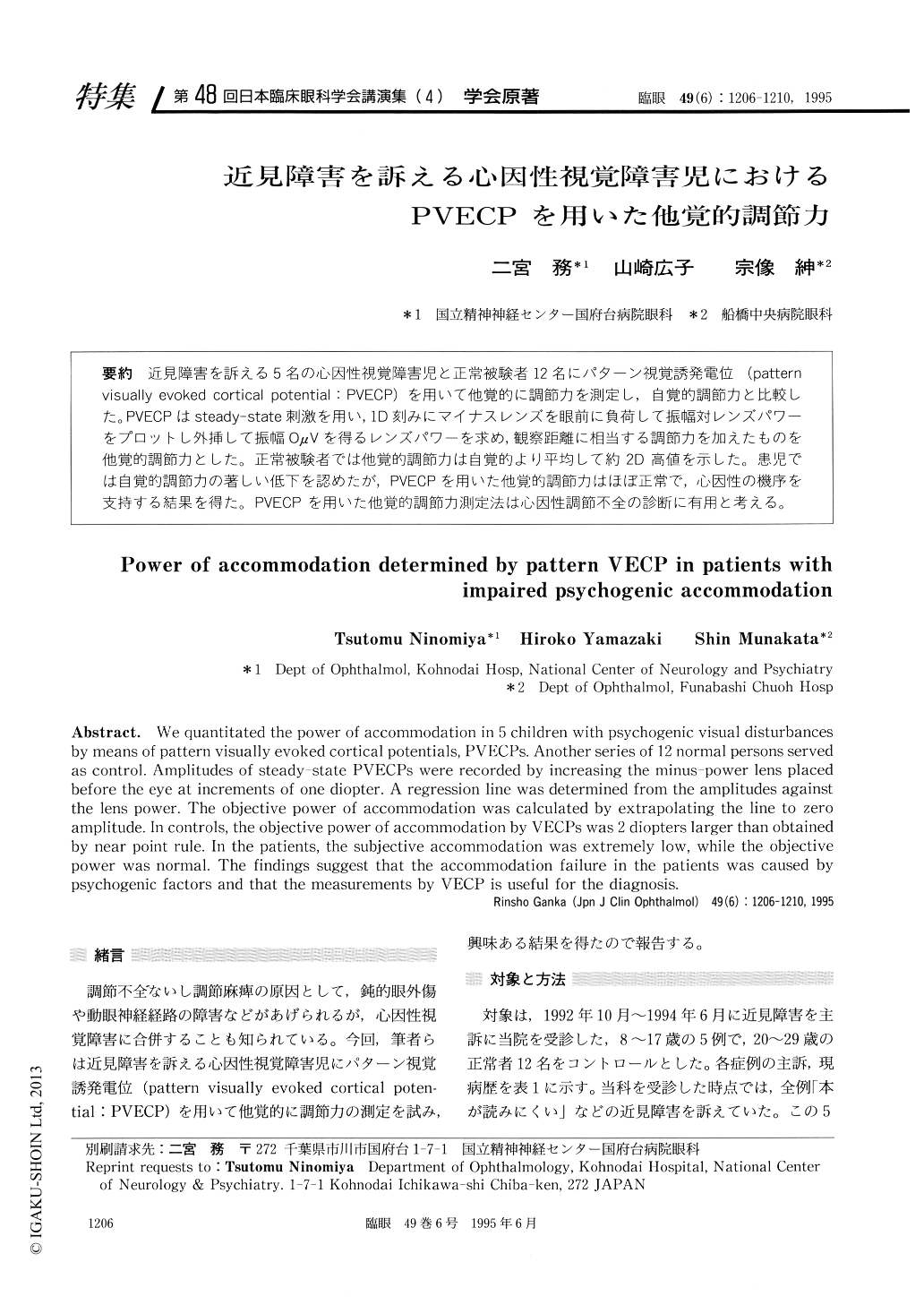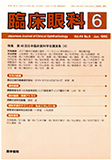Japanese
English
- 有料閲覧
- Abstract 文献概要
- 1ページ目 Look Inside
近見障害を訴える5名の心因性視覚障害児と正常被験者12名にパターン視覚誘発電位(pattern visually evoked cortical potential:PVECP)を用いて他覚的に調節力を測定し,自覚的調節力と比較した。PVECPはsteady-state刺激を用い,1D刻みにマイナスレンズを眼前に負荷して振幅対レンズパワーをプロットし外挿して振幅OμVを得るレンズパワーを求め,観察距離に相当する調節力を加えたものを他覚的調節力とした。正常被験者では他覚的調節力は自覚的より平均して約2D高値を示した。患児では自覚的調節力の著しい低下を認めたが,PVECPを用いた他覚的調節力はほぼ正常で,心因性の機序を支持する結果を得た。PVECPを用いた他覚的調節力測定法は心因性調節不全の診断に有用と考える。
We quantitated the power of accommodation in 5 children with psychogenic visual disturbances by means of pattern visually evoked cortical potentials, PVECPs. Another series of 12 normal persons served as control. Amplitudes of steady-state PVECPs were recorded by increasing the minus power lens placed before the eye at increments of one diopter. A regression line was determined from the amplitudes against the lens power. The objective power of accommodation was calculated by extrapolating the line to zero amplitude. In controls, the objective power of accommodation by VECPs was 2 diopters larger than obtained by near point rule. In the patients, the subjective accommodation was extremely low, while the objective power was normal. The findings suggest that the accommodation failure in the patients was caused by psychogenic factors and that the measurements by VECP is useful for the diagnosis.

Copyright © 1995, Igaku-Shoin Ltd. All rights reserved.


